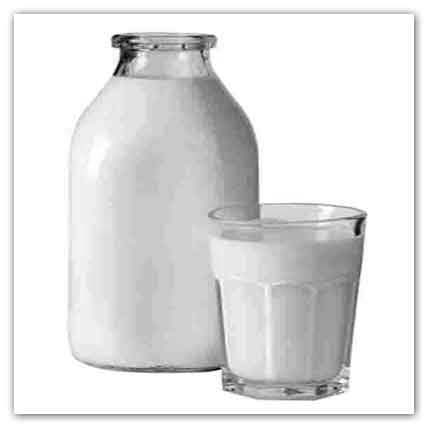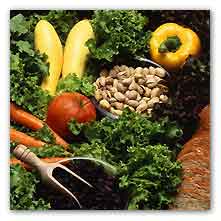|
High milk consumption might shorten life span
through increased oxidative stress. Researchers Karl
Michaëlsson, Liisa Byberg (Unit of Orthopedics,
Department of Surgical Sciences, Faculty of
Medicine, Uppsala University, Uppsala, Sweden),
Håkan Melhus (Unit of Clinical Pharmacology,
Department of Medical Sciences, Faculty of Medicine,
Uppsala University, Uppsala, Sweden) and Alicja Wolk
(Unit of Nutritional Epidemiology, Institute of
Environmental Medicine, Karolinska Institutet,
Stockholm, Sweden) aimed to determine whether higher
mortality rates with high milk consumption are
modified by fruit and vegetable intake or total
antioxidant intake (oxygen radical absorbance
capacity).

Researchers used information from food frequency
questionnaires completed by 61,420 women in a
Swedish cohort (22,391 deaths from the 1987–1990
baseline onward), 36,714 women from a second survey
(1997) of this cohort, and 45,280 Swedish men
(15,478 deaths from the 1998 baseline onward).
By reducing oxidative stress and inflammation
processes, higher fruit and vegetable intake has
convincingly been shown to promote longevity and
reduce the risk of cardiovascular disease and some
cancers.
Intriguingly, and supporting our results in women,
there is experimental evidence that fruits and
vegetables or extracts of them can rescue animals
from the premature aging phenotype induced by
galactose supplementation.
No clear interaction was found between milk intake
and fruit and vegetable intake in men.
This failure to find an interaction could have
several explanations.

The association between milk and mortality was more
modest in men, and a clear excess mortality rate was
observed in men only above =3 glasses/day, which
limited our possibility to detect an interaction
pattern with fruit and vegetables.
Furthermore, the gene expression and activity of
antioxidant enzymes (such as mitochondrial
glutathione peroxidase and superoxide dismutase) in
animals seem to be higher in females than in males,
giving females an enhanced capacity to provide
mitigation of oxidative damage through an increased
intake of antioxidants.
Compared with low consumption of milk (<1 glass/day)
and high consumption of fruits/vegetables (=5
servings/day), time-updated information revealed an
adjusted hazard ratio for death of 2.79 (95%
confidence interval (CI): 2.42, 3.21) in women who
consumed =3 glasses of milk/day and <1 serving/day
of fruit/vegetables and a hazard ratio of 1.60 (95%
CI: 1.40, 1.82) in women who consumed the same
amount of milk but =5 servings/day of
fruits/vegetables.
The same comparisons in men, based on a single food
frequency questionnaire, displayed hazard ratios of
1.31 (95% CI: 1.14, 1.51) and 1.07 (95% CI: 0.97,
1.18), respectively.
Total antioxidant consumption showed similar
patterns as fruit/vegetable intakes. Dietary
antioxidant intake, especially in women, seems to
modify the elevated death rate associated with high
milk consumption.
For more information
Milk, Fruit and Vegetable, and Total Antioxidant
Intakes in Relation to Mortality Rates: Cohort
Studies in Women and Men
American Journal of Epidemiology
Link...
MDN |